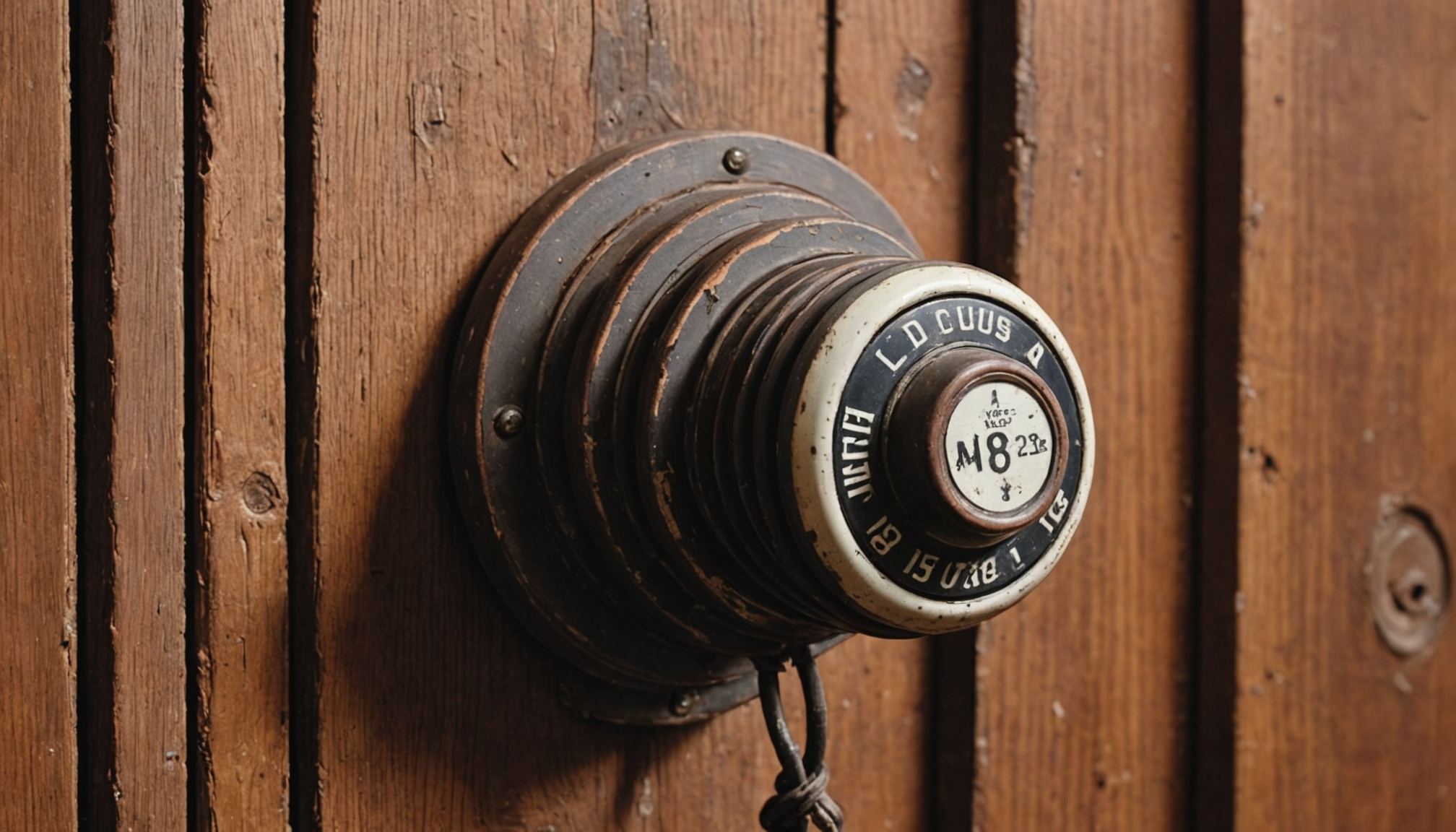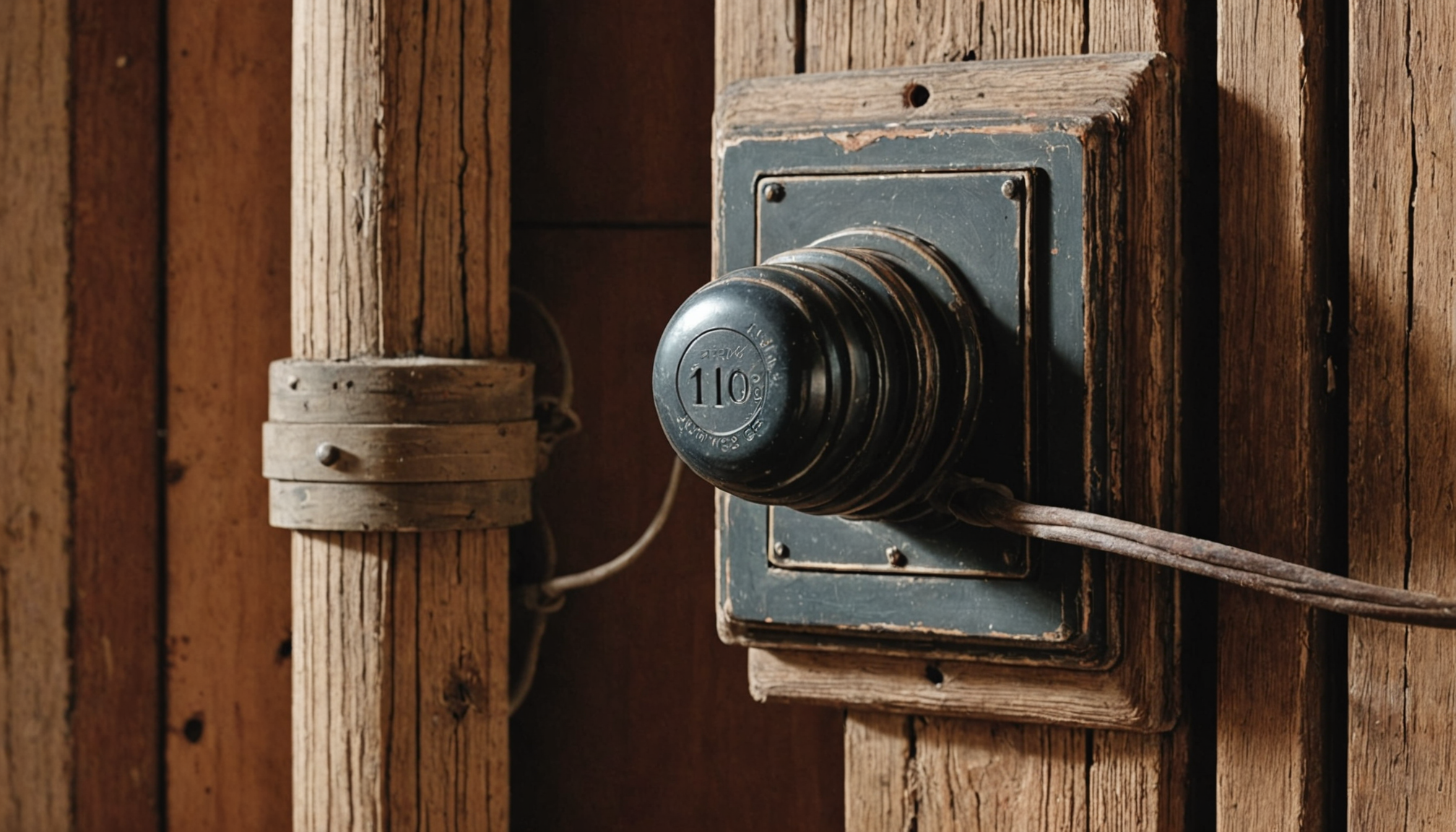In the landscape of American architectural history, knob-and-tube wiring stands out as a hallmark of early 20th-century electrical systems. This widely used method of electrical wiring existed predominantly from the 1880s to the 1940s and became a staple in homes across the United States, including those in historic St. Louis. Understanding knob-and-tube wiring is vital for homeowners considering renovations or electrical upgrades, particularly given the unique characteristics that differentiate it from modern wiring systems.
Knob-and-tube wiring derives its name from the ceramic knobs that support the wires along their run and the tubes that provide protection when wires pass through wood framing. The system features individual, insulated copper conductors, meaning wires for neutral and live paths are run separately. This arrangement is unlike modern wiring, where both conductors are housed within a single cable. The primary advantage of this system was its simplicity and ease of installation during its heyday, as it allowed electricians to effectively manage electrical distribution with the technology available at the time.
However, the design, while innovative during its inception, presents several limitations by today’s standards. Notably, knob-and-tube wiring lacks a grounding conductor, which modern safety codes deem essential for reducing the risk of electrical shock and fire hazards. The absence of grounding poses particular challenges in a city like St. Louis, where many historic homes are nestled in neighborhoods prone to severe weather conditions that can exacerbate electrical vulnerabilities.
Moreover, the insulation used in knob-and-tube wiring was typically rubberized cloth, which deteriorates over time, leading to exposed wires and diminishing safety performances in these vintage systems. Homeowners with potentially generations-old wiring often face challenges such as insufficient electrical capacity to meet contemporary power demands, making understanding and assessing their current systems crucial before undertaking upgrades. Indeed, the National Electrical Code no longer permits knob-and-tube installations in new constructions or renovations without specific caveats owing to these safety concerns (International Association of Electrical Inspectors, 2023).
Recognizing the presence and implications of knob-and-tube wiring is the first step towards ensuring a safe and efficient electrical system. For St. Louis homeowners, that often involves engaging with electrical experts who are familiar with both the history and modern requirements of these intricate systems. Partnering with knowledgeable professionals can provide peace of mind while preparing for necessary upgrades or replacements, ensuring that the historic charm of a home does not come at the expense of safety or functionality.
Signs that your home has knob-and-tube wiring
Detecting knob-and-tube wiring in your historic St. Louis house is an important task for ensuring electrical safety and planning potential upgrades. Typically, homes built before or around the 1940s are the most likely to have these systems. Identifying this type of wiring can be a bit challenging, especially if much of your home’s electrical components are hidden behind walls or ceilings.
One of the most distinct indicators of knob-and-tube wiring is the presence of ceramic knobs and tubes themselves. These components may be visible in unfinished spaces like basements or attics. The knobs are generally mounted on joists and beams to hold the wires in place as they run across or through structural elements. Meanwhile, the tubes are often situated where wires pass through wooden components, protecting them from contact and potential abrasion.
Another sign of knob-and-tube wiring is the absence of ground wires. Unlike modern systems that incorporate grounding to enhance safety, knob-and-tube wiring consists merely of two wires: a black ‘hot’ wire and a white ‘neutral’ wire. This lack of grounding can lead to increased risk of electrical shock or fire, particularly in circumstances involving metal fixtures or appliances.
In some cases, you may discover remnants of old wiring insulation, which might appear as white ceramic or black rubberized cloth. As this insulation deteriorates over time, the exposure of copper wires becomes a significant safety concern, an issue compounded in older houses where the electrical load demands exceed the system’s original capacity. You might notice frequent blown fuses or other issues that indicate an overtaxed electrical system.
If you’re uncertain about whether your home has knob-and-tube wiring, consulting with an experienced electrician is a wise decision. These professionals can inspect your property and determine whether this outdated system exists, offering recommendations for addressing any associated risks.
- Ceramic knobs and tubes are hallmarks of knob-and-tube wiring and may be visible in unfinished areas like attics or basements.
- Homes built before the 1940s in St. Louis are likely candidates for knob-and-tube wiring.
- This system lacks grounding wires, increasing the risk of electrical shock and fire hazards without modern safety standards.
- Deteriorating rubberized cloth insulation could expose wires, posing further safety concerns.
- Consulting an electrician can help confirm the presence of knob-and-tube wiring and address potential issues.
Potential hazards and risks
Knob-and-tube wiring, while historically significant, can pose several potential hazards that homeowners need to be aware of. One of the primary concerns with this type of wiring is its lack of grounding. Modern wiring systems include a grounding wire to prevent electrical shock and help manage electricity surge safely in your home. The absence of this critical feature in knob-and-tube systems can increase the risk of electric shock, especially if the wiring comes into contact with water or with metal surfaces like light fixtures and appliances.
Another hazard with knob-and-tube wiring is its insulation material. Typically wrapped in rubberized cloth, this insulation becomes brittle over time, especially in the hot, humid conditions characteristic of St. Louis’s climate. Deterioration of the insulation can lead to exposed wires, which significantly heightens the risk of shorts and electrical fires. This issue is even more pressing when knob-and-tube systems are subjected to modern household electrical loads for which they were never designed.
Moreover, many homeowners unknowingly contribute to the risks associated with knob-and-tube systems through inappropriate modifications or over-insulation. Adding insulation over knob-and-tube wiring without proper clearance, a common mistake, can lead to heat buildup, as these systems rely on open air to dissipate heat. This improper covering can become a fire hazard. Similarly, tampering with or splicing additional wires into the existing knob-and-tube system without proper expertise often leads to circuit overloads, as these original systems were not designed to handle the electrical demands of today’s appliances and technology.
To mitigate these risks, homeowners in St. Louis should approach any modifications of their knob-and-tube wiring with caution. Consulting with a licensed electrician who understands the historical aspects and technical specifications of knob-and-tube wiring is crucial. Such professionals can carry out a thorough inspection, providing guidance on how to safely upgrade or replace your system without compromising the historic integrity of your home. Additionally, periodic inspections can help identify and remedy insulation deterioration or other wear and tear before it becomes a serious hazard. Thus, a proactive approach to maintenance combined with professional guidance can ensure both safety and the preservation of your historic St. Louis home.
Options for upgrading or replacing
When considering options for upgrading or replacing knob-and-tube wiring in your historic St. Louis home, it’s crucial to evaluate both safety and preservation. The charm of your vintage abode can be maintained while ensuring compliance with modern electrical standards — overcoming the limitations of outdated systems without sacrificing the architectural elegance of your property.
One primary approach is a complete rewiring of the home. This might involve replacing the old knob-and-tube system with contemporary non-metallic (NM) cables that conform to current safety codes, including the integration of grounding conductors. Unlike their predecessors, modern wiring methods ensure safer electrical distribution and protect the home from severe risks such as electrical fires and shock, delivering peace of mind and enhanced functionality. If you choose this route, it allows for a clean slate that can support modern electronics and appliances seamlessly.
Alternatively, partial upgrades can be considered if you’re focusing on specific critical areas or if a complete overhaul is not immediately feasible. This can include integrating ground fault circuit interrupters (GFCIs) in more sensitive zones like kitchens or bathrooms to mitigate shock risks. This option may not provide a comprehensive safety solution but offers significant improvements in critical spaces while planning for a larger update eventually.
Sometimes, combining these methods is beneficial, where the entire system is strategically replaced over time as part of a phased plan — tackling the most at-risk elements first. This step-by-step approach can often help manage costs spread over a longer timeframe while incrementally increasing the safety of your home’s wiring infrastructure.
Successful upgrading demands that you work closely with licensed electricians skilled in dealing with historic homes. These professionals can offer assessments, recommend cost-effective strategies, and ensure all work aligns with current residential standards and historical preservation guidelines. A skilled electrician who respects both historical value and modern safety is your greatest ally in this endeavor.
Taking action toward upgrading your home’s wiring not only enhances safety but can also boost property value and potentially lower insurance premiums, as many companies look unfavorably upon the increased risks associated with older wiring systems. It’s an investment in your home, your peace of mind, and the cherished history your home represents.
Embrace the journey of modernization as a means to honor your home’s past while ensuring a secure and bright future. With each thoughtful upgrade, you are preserving the legacy of your St. Louis house for generations to come. Each step forward is a testament to your commitment to both safety and heritage, turning potential pitfalls into an exciting project that secures your beloved home’s place in future eras.
Choosing the right electrician for the job
- How do I know if my house has knob-and-tube wiring?
- Look for ceramic knobs and tubes in unfinished areas like the attic or basement. Homes built before the 1940s in areas such as St. Louis are likely candidates for this type of wiring. If you’re unsure, having a professional inspection can confirm its presence.
- Can knob-and-tube wiring be left in place if it still works?
- Technically, yes, knob-and-tube wiring can remain if it’s in good condition, but it poses safety risks like a lack of grounding and deteriorating insulation. Upgrading to modern wiring systems is recommended for enhanced safety and efficiency.
- What’s the cost of replacing knob-and-tube wiring?
- Replacing knob-and-tube wiring can vary greatly in cost, often ranging from $5,000 to $15,000, depending on the size of the home and complexity of the project. Getting several quotes from licensed electricians in your area such as St. Louis will help you budget accordingly.
- Are there specific safety codes for historic homes regarding wiring?
- Yes, historic homes with knob-and-tube wiring often fall under both general electrical safety codes and special regulations to preserve their character. It’s important to work with electricians knowledgeable about these specific codes to ensure compliance during upgrades.
- Is it possible to upgrade the wiring without damaging plaster walls?
- Yes, skilled electricians can often upgrade wiring with minimal disruption. Techniques such as using existing pathways and strategic cutting make it possible to preserve the integrity and aesthetics of your home’s plaster walls.

